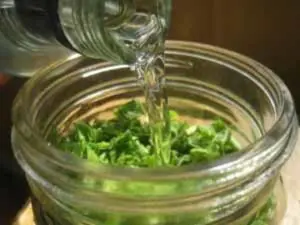The poisonous plant crow's eye is known to many. Herbal treatment has long become popular as a result of dissatisfaction with traditional medicines. However, the widespread belief that herbal remedies are "natural" and therefore harmless. The consequences of using herbal medicines can be life-threatening.
Crow's eye plant (Paris) belongs to the class Monocots, family Melanthiaceae and includes 24 species. The growing area is wide: Europe, Siberia, Far East, Caucasus, Crimea, etc. (). The most common species is Paris quadrifolia, the four-leaf raven's eye. Other popular names are crowberry, crow berries, bear berries, wolf's eye, cross-grass, monoberry, crowberry, etc. Sometimes crowberry is confused with blueberries or blueberries, since the plant also has round berries of a dark blue color.
In the past, the plant was used as an antidote to highly toxic substances such as or.
The content of the articleAbout the plant
Crow's eye prefers humus-rich soils and grows best in moist, shaded areas. It can be found in ravines, along the banks of rivers and lakes, in deciduous and coniferous forests, on damp slopes of rocks. This plant is a good indicator of soil fertility because the soil must be at least moderately nutritious for the species to thrive. Even in the best habitats it grows solitarily and rarely forms groups.
The single greenish-yellow flower of the crow has four inner very narrow petals, four green sepals, and eight stamens. The flower is located at the top of a ribbed stem. It is not very attractive, nor is its aroma. The flies that visit the flower in large numbers are probably attracted by this very smell, reminiscent of the smell of rotting meat.
Crow's eye blooms from May to July, then a rather large dark blue berry appears in place of the flower. Just like a flower, it smells bad and tastes unpleasant. But the external resemblance to blueberries and blueberries is undeniable. Animals do not eat crow berries, but birds readily peck them without any harm to themselves.
Medicinal properties of a poisonous plant
The chemical composition of the plant includes organic acids (malic, ascorbic, citric), flavonoids, pectin, coumarin, paridin glycoside and paristifin saponin. It is the latter two substances that have neurotoxic properties. The rhizome contains saponins with a steroid structure.
In folk recipes, green leaves are used to make alcoholic tinctures, and the black berry can be dried and In case of poisoning with a crow's eye, it is forbidden to give laxatives to the victim!
Treatment of intoxication
The victim must be hospitalized in the intensive care unit or intensive care unit. The hospital conducts kidney and liver function tests and blood tests (general and biochemical).
Timely initiation of treatment allows you to prevent or minimize the consequences of consuming a toxic plant.
Gastric lavage is carried out no later than 1 hour after taking the toxin; if more time has passed, this procedure is useless, since the poison has already been absorbed into the blood.



